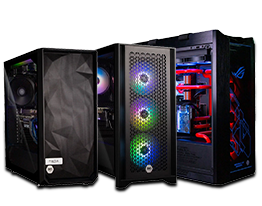Virtual Reality Buyers Guide
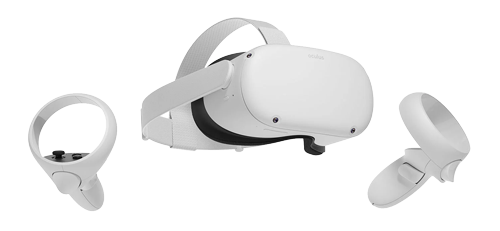
Virtual Reality (VR) is the experience of an environment that doesn’t really exist. It is created by a computer device - either a phone, tablet or PC that enables you to experience and interact with a 3D world. By putting on a head-mounted display and some form of input tracking, it will create an immersive, believable experience, allowing you to explore the virtual world being generated by the computer. VR has uses both in the home for gaming or simulation programs, and in business for things like product design, architecture and medicine.
Because the headset sits immediately in front of your eyes rather than at some distance like a monitor screen does, the experience is much more immersive as all other distracting surroundings are removed. However, this also means that the computer has to deliver much higher resolution images to ensure the experience is both smooth and consistent. The type of headset chosen, device to support it and type of environment you wish to use VR in all have a bearing on the end result and this guide will take you through all these different facets.
Types of VR
| Standalone VR | PC-powered VR | |
|---|---|---|
| Flexibility | No cabling required | Cables needed |
| Quality of display | Average | High |
| Applications Supported | App Store Only | App Store and PC-based |
| Cost | £ | £££ |
Standalone VR offers great flexibility as the headset is wirelessly connected directly to the Internet and an app store or similar where VR applications can be accessed. No external device is required to create the VR environment (although a smartphone or tablet is needed to initially set-up the headset on first use), so costs are kept to a minimum. There are however some limitations - as all the compute power resides in the headset, there can only be limited processing power, storage capacity and quality of image may suffer if the wireless connection isn’t consistent or fast enough.
When it comes to PC-powered VR the experience is mostly determined by the graphics card (GPU) with higher-spec models delivering smoother frame rates and better visual quality. There will also be likely much greater processor power and storage within a PC, to make more complicated VR environments function well, and access to many more VR-ready PC applications rather than an app store. The down side is that this enhanced experience needs to be tethered (using an HDMI cable) to the PC to provide the higher quality experience. Costs will also be higher. It is worth mentioning that multiple VR headsets can be supported by a particularly powerful PC - either in the same environment or using virtual machine (VM) software to create multiple concurrent user experiences.
Although these approaches are different, the latest VR headsets offer both options - being able to operate without a PC, but having the ability to be connected to one via an additional cable to create the more powerful environment. This approach provides the best of both VR worlds.
How VR Works
At its core, VR technology has only one purpose: to simulate settings and environments realistically enough to fool the human brain into accepting them as reality. From a scientific standpoint, that all begins by understanding how our brains interpret the things we see to develop a mental picture of the world around us. Put simply, our perception of reality is based on rules we develop using our experiences as a guide. For example, when we see the sky, it tells us which direction is up. When we see objects we can identify, we can use their size relative to one another to judge distance. We can also detect light sources by picking up on the shadows cast by the objects around us. VR designers can use those conventional rules to create virtual environments that conform to our mental expectations of reality. When they do, the result is a seamless experience that we interpret as real.
Headset Display
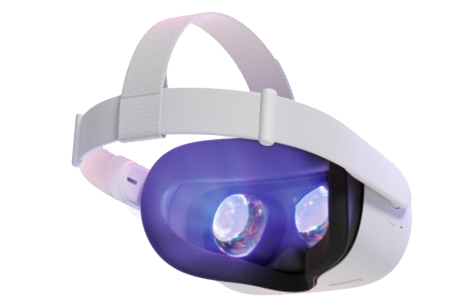
The VR display is created when a video signal is sent the headset display. VR headsets tend to use two LCD displays - one for each eye - with lenses placed between your eyes to focus and reshape the picture for each eye and create a stereoscopic 3D image by angling the two 2D images to mimic how each of our two eyes views the world ever-so-slightly differently. These two images and wraparound nature of the headset (like goggles) combine to increase immersion by delivering a wide field of view. Most headsets will deliver a 100 - 110 degree field of view, which is wide enough to mimic reality, although it is essential to ensure the displays are of significantly high enough frame rate. For the resulting picture to be at all convincing, a minimum frame rate of around 90 frames per second (fps) is recommended - this keeps the movement fluid and without stutter that could cause motion sickness.
Head Tracking
Head tracking means that when you wear a VR headset, the picture in front of you shifts as you look up, down and side to side or angle your head. A system plots your head in terms of your X, Y and Z axis to measure head movements forward and backwards, side to side and shoulder to shoulder, otherwise known as pitch, yaw and roll. There are a few different internal components which can be used in a head-tracking system, such as a gyroscope, accelerometer and a magnetometer. Headsets may also use LEDs or cameras inbuilt to the front plate to help track 360 degree motion as you move. Head-tracking technology needs low latency to be effective - 50 milliseconds or less is needed so you don’t detect the lag between when you turn your head and when the VR environment changes.
Hand Tracking
To interact with a virtual environment you need some way of inputting into it - this can be done with the usual suspects such as keyboard, mouse, joystick or gamepad or hand-held controllers. Typically, greater input and flexibility is gained when using controllers as they allow features such as haptic feedback offering a sense of touch or texture within the VR space.
Controller or hand actions allow the user to interact with the VR environment created - opening doors, selecting or manipulating items or selecting from menus. The level of control needed will very much depend on the use case of the VR environment.
Room Scale Tracking
Define your Boundary
System generates the parameters
Warning if breach area
So far the elements we’ve looked at relate to use of VR with the user in a static position. However it is possible to define a space to move around in to create a much larger VR environment. This can be done in two ways - firstly by drawing your space when using a standalone headset thus defining arbitrary boundaries of your VR environment:
Alternatively, external sensors (called base stations) connected to the PC to create the boundaries of your space can be used. These then not only define the boundaries of your VR space, but also act to track your movement with.
It is worth mentioning that the base stations are likely to either require wall mounting or need additional stands to create the ideal environment. As they require physical connection to the PC, additional cable lengths may be needed - all adding extra costs.
Audio
Most headsets include spatial or 3D audio capabilities - that is to say that they contain speakers that delivers sound in line with your head movement to make the VR environment as realistic as possible. It is also possible to connect external headphones to the headset too if this is your preferred choice.
Cases for VR
Although there is an ever-growing list of applications that are capable of taking advantage of VR technology, here are a few examples of how it can be integrated into a wide variety of industry sectors.
Gaming
Whether using a static set up in a flight simulator or racing environment or using a room scale interactive environment in a first-person shooter game, VR adds a level of realism that cannot be matched by even the best wide screen monitors. An increasing list of gaming titles are released VR ready for the best possible experience.
Manufacturing
VR is increasingly being used to visualise products and potential design flaws or advantages prior to prototypes being made. This allows organisations to tweak designs or make multiple versions and get feedback before expensive materials are used to create real physical versions.
Training
Whether industrial, transportation or military-based, VR is being employed to create environments where evacuations or safety procedures can be carried out without the risk of real-world injury or the expense of deploying vehicles or aircraft.
Sales
Being able to create an exact virtual replica of a fitted kitchen or a car interior can prove to be a powerful sales tool, as the customer gets to experience exactly what the final product will be like rather than guess. It also makes changing colour schemes and fabric finishes changeable in an instant making comparisons very easy.
Medical
VR can be used to create 3D interactive models of organ systems or entire bodies from computer scans so students or surgeons can understand exactly how things fit together, can see where a problem may lie, or better plan a procedure prior to the actual operation.
Architecture & Design
The ability to walk around a virtual building at the planning stage is invaluable in ensuring that all the systems can be made as cost-effective and compatible as possible. Understanding how a space will function prior to building it can deliver the optimal results for any given construction project.
VR Equipment
As we’ve seen there are a number of components that can make up a VR system - let’s run through them and point out any consideration it may help to be aware of.
VR Headset Kits
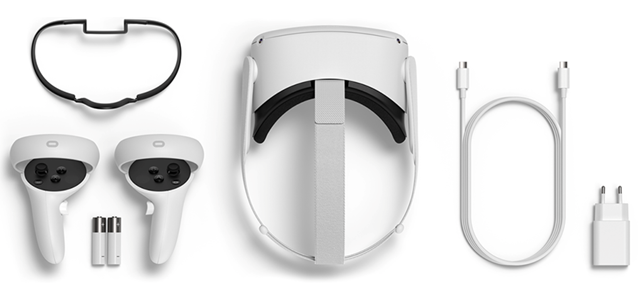
Usually the headset and controllers are supplied in a kit with a number of other accessories such as charging cables, adapters and batteries plus elements like a glasses spacer to move the headset away from the face slightly to accommodate a spectacles wearer. Additional nose pads or face pads will be available to enable some customisation of the headset fit too.
It is worth looking at the battery life of a headset as this is likely to be the limiting factor of how long a VR gaming or working session can be. A standalone headset will also likely use more battery too, as all the processing of images and connectivity is occurring in the headset unit. A PC based system will offload much of this power demand to the PC itself. If longer sessions are regularly required then additional back-pack style battery packs can be added to provide more power.
It is worth mentioning at this point that if the headset is to be used in a commercial environment - meaning a business rather than home use, a commercial licence may be needed to operate a VR headset. Check the usage licensing of any headset you are considering purchasing, but to be certain commercial versions of some headsets are available.
Cabling, Stands and Cases
If you are wanting to take advantage of a PC to power your experience then an additional cable will be required to feed the video signal. This will usually be several metres long to allow enough freedom of movement within a room scale environment.
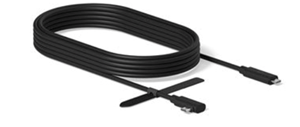
As previously mentioned, if you are not using a standalone-capable headset then external base station sensors, link boxes and stands many be required to create room scale VR spaces.
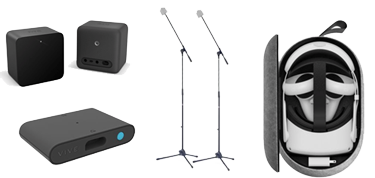
Carry cases can also be purchased to securely and safely transport the headset, controllers and cabling around as required.
Desktop PCs

As we’ve mentioned a standalone VR headset requires nothing more than a smartphone to enable the initial set-up, but a PC-based system clearly requires a sufficiently powerful PC. The absolute minimum requirements for a VR PC are as follows.
| PROCESSOR | Intel Core i5 / AMD Ryzen 5 or greater |
| MEMORY | 8GB RAM or more |
| OPERATING SYSTEM | Microsoft Windows 10 |
| GPU | Usually any mid-range GPU card but check our NVIDIA GPU buyers guide and AMD GPU buyers guide for details |
To save checking all these compatibilities Scan offer a range of 3XS VR-ready Pro Gaming PCs pre-specced, fully built and ready to go - these cover a variety of budgets but each guarantees that you’ll have a great VR experience.
The Best VR Headsets
We hope you’ve found this guide useful in helping you choose your VR equipment whether you’re looking for a simple standalone system or a full room scale PC configuration. Click below to discover our great range of VR products.
If you’d still like some help in picking the best solution for you needs don’t hesitate to call our friendly advisors on 01204 474747.



